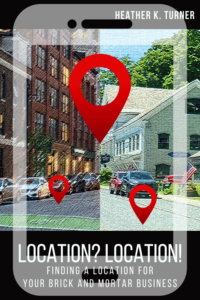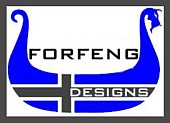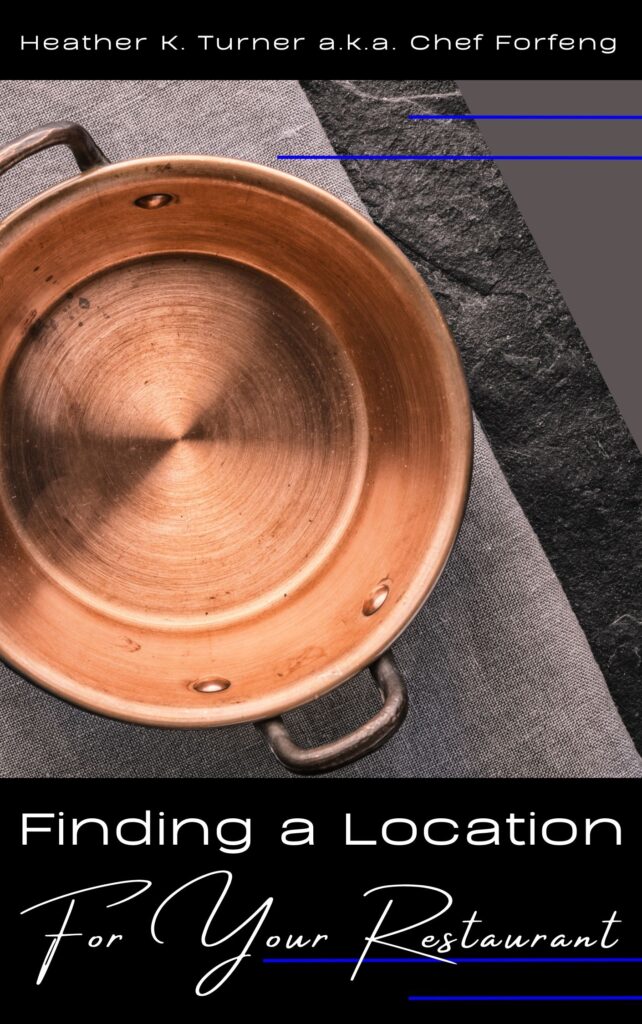by Heather T. | Jan 29, 2025 | Business, Observations, Operations, Selling a Business
 Additional information on each question from 50 Questions to Ask a Business Broker When Selling a Business
Additional information on each question from 50 Questions to Ask a Business Broker When Selling a Business
Q16. How will you market my business to potential buyers?
Why should you ask this?
A strong marketing strategy (e.g., leveraging industry-specific networks, confidential listings, or targeted outreach to private equity groups) can significantly expand the pool of potential buyers. Make sure they are using methods that effectively reach the right audience. A strategic marketing plan is essential for attracting the right buyers and achieving the highest sale price. Understanding how your broker intends to market your business gives you a lot of insight into their approach and reach.
Good brokers typically employ a variety of marketing tactics to promote a business. Ask if they plan to use confidential business-for-sale websites, industry-specific networks, or do direct outreach to their network of buyers. For larger or niche businesses, brokers may also work with private equity groups, strategic buyers, or even international markets.
Ask about the level of detail they’ll include in their marketing materials (executive summaries, teaser documents, and information memorandums) to attract serious buyers without revealing sensitive information too early.
Q17. What types of buyers do you typically attract (strategic, financial, individual)?
Why should you ask this?
Understanding the broker’s network of buyers is crucial in determining if they can connect you with the right buyer. Strategic buyers (companies in the same or related industries) may pay more for a business, while financial buyers (private equity firms, investors) often focus on a businesses profitability and scalability. Individual buyers may have different expectations regarding price and after the sale involvement.
Different types of buyers, such as strategic or financial buyers, have unique motivations and expectations. Your broker should find buyers who will help you achieve your goals, whether that’s getting the highest price, keeping your company’s culture, or something else important to you.
Ask the broker what percentage of their past deals have involved strategic buyers versus financial buyers or individual investors. This will give you some insight into their existing network and the types of potential buyers they’re familiar with.
For example, a strategic buyer might value your business for its customer base or technology, while a financial buyer might prioritize cash flow. The right type of buyer will depend on your goals, whether you’re looking for maximum cash upfront, a quick exit, or ongoing involvement. Ensure that the broker’s typical buyer base aligns with your desired outcome.
Q18. What online platforms do you use to promote listings?
Why should you ask this?
A broker’s online presence can reveal how modern and up to date their own marketing strategies are, and that can often mirror what they will do to promote your business.
A broker’s choice of online platforms significantly impacts how effectively their business is marketed to potential buyers. In today’s digital world, a broker’s online presence is a key indicator of their marketing reach, strategic approach, and ability to connect with a wide range of buyers. By understanding the platforms they use, you can assess whether they have the tools and resources to maximize your business’s visibility.
Brokers typically use a mix of industry-specific marketplaces, general business-for-sale websites, social media, and other digital strategies to attract qualified buyers. Here’s an overview of some commonly used online platforms and their benefits:
1. Business-For-Sale Marketplaces
These platforms list businesses on the market, attracting individual buyers, private equity firms, and strategic acquirers seeking acquisitions.
Some popular platforms include:
BizBuySell
BizBuySell is one of the largest and most recognized online marketplaces for buying and selling businesses. With millions of monthly visitors, listing your business here ensures wide visibility and access to a large pool of potential buyers, from individuals to private investors.
BizBuySell enables brokers to add detailed business information while protecting confidentiality. They also offer tools for managing inquiries, which can help filter out unqualified buyers early in the process.
BusinessBroker.net
Another leading platform for listing small and mid-sized businesses, BusinessBroker.net attracts a broad audience of buyers and investors. A broker who lists on this platform can provide additional exposure, particularly if your business falls within a popular industry category.
This platform includes resources like valuation tools, making it appealing to buyers looking for detailed insights, and helping your broker engage with more qualified leads.
LoopNet
Although primarily known for commercial real estate listings, LoopNet also includes business sale listings, especially those that include real estate components. This platform is beneficial if your business involves significant real estate holdings or physical assets that need to be highlighted as part of the sale.
LoopNet reaches buyers who are specifically interested in businesses with real estate, which can enhance the appeal of listings that have an asset-based component.
BusinessesForSale.com
This global platform provides access to a diverse international buyer base, making it particularly useful if you’re open to international buyers or if your business operates in industries with global appeal (e.g., technology, hospitality).
The international exposure of BusinessesForSale.com allows your business to reach buyers beyond your local market, increasing the chances of finding a buyer with specific expertise or a strategic interest in your business.
Crexi
Crexi (Commercial Real Estate Exchange, Inc.) focuses on commercial real estate transactions but is also useful for businesses tied to real estate, such as retail, hospitality, or industrial operations.
Known for its user-friendly interface and analytics tools, Crexi helps sellers market properties effectively while providing buyers with detailed insights. It’s ideal for those seeking a modern, data-driven platform for business-related property transactions.
2. Private Equity and Investor Networks
Besides general marketplaces, many brokers will also target private equity firms, venture capitalists, and high-net-worth individuals through specialized platforms. If your business is larger, growing quickly, or has high profitability, these networks are crucial.
Axial
Axial is a platform that connects small to mid-market businesses with private equity firms, family offices, and strategic acquirers. If your broker is using Axial, it shows that they are actively targeting financial and strategic buyers who are looking for businesses to invest in or acquire.
Axial’s network of professional buyers is particularly attractive for businesses looking for growth capital, partnerships, or partial exits. If your business is appealing to institutional investors, listing on Axial increases your chances of connecting with sophisticated, qualified buyers.
DealStream
DealStream, (formerly MergerNetwork) is another platform used by brokers to connect with private investors, mergers and acquisitions (M&A) firms, and industry-specific buyers. It’s known for attracting a more professional buyer pool than general business-for-sale sites.
This platform serves higher-end deals, making it more suitable for businesses with substantial revenue or strategic value. If your broker uses this platform, it shows they are aiming to connect your business with institutional buyers or strategic acquirers rather than individual investors.
3. Social Media Marketing
Social media has become an increasingly important tool for business brokers to promote listings and connect with a wider audience. Effective use of platforms like LinkedIn, Facebook, and X (formerly Twitter) can show a broker’s ability to modernize their approach and reach tech-savvy buyers.
LinkedIn
LinkedIn is a powerful tool for reaching professional buyers, including executives, strategic acquirers, and private equity groups. Brokers who actively promote listings on LinkedIn can tap into a network of professionals who may be interested in acquisitions to grow their own companies or investment portfolios.
LinkedIn also allows brokers to join relevant industry groups, publish articles, and connect with potential buyers directly, which can give your business exposure to a more targeted audience. If your business operates in a B2B or professional services space, LinkedIn can be especially useful.
Facebook
While primarily a social platform, Facebook is used by brokers to reach individual buyers and investors. Brokers might create targeted ads or post listings in industry-related groups.
Facebook’s robust ad targeting allows brokers to tailor their promotions based on location, industry, and buyer behavior, reaching potential buyers who may not be actively searching business-for-sale platforms but are still interested in entrepreneurial opportunities.
4. Search Engine Optimization (SEO) and Paid Advertising
Many modern brokers go beyond traditional listing platforms and use digital marketing techniques such as SEO and paid search advertising, to increase visibility.
Search Engine Optimization (SEO)
SEO allows brokers to rank their listings higher in search engine results when potential buyers are searching for relevant business opportunities. For example, a broker with a strong SEO strategy might ensure that when someone searches “businesses for sale in X industry” or “buy a company in Y location,” your business listing appears at the top of the search results.
SEO helps attract organic traffic from qualified buyers who are actively looking for business opportunities, driving more attention to your listing without additional advertising costs.
A good broker won’t just concentrate on Google, but also focus on Bing (Alexa from Amazon draws a lot of information from Bing among some other content sources) and lesser search engines.
Google Ads (Paid Search Advertising)
Paid search advertising (e.g., Google Ads) allows brokers to promote your listing directly to potential buyers based on their search queries. If your broker uses paid ads, they can target specific keywords and demographics to ensure your listing appears in front of qualified buyers.
Google Ads can generate immediate visibility for your business listing, especially in competitive markets where organic traffic alone might not be enough. Paid ads also offer geographic targeting, ensuring your listing reaches buyers in specific regions or countries.
5. Industry-Specific Websites and Platforms
Besides general business-for-sale platforms, some industries have niche websites and forums where people buy and sell businesses. A broker with industry expertise may use these specialized platforms to attract buyers with a specific interest or expertise.
Franchise Direct (for franchises)
If your business is part of a franchise, brokers may list it on franchise-specific platforms like Franchise Direct. These platforms attract buyers specifically looking for franchise opportunities, ensuring your business is seen by the right audience.
Franchise-specific platforms have buyers who are familiar with the franchising model and are likely to be more serious and knowledgeable about the requirements and costs associated with buying a franchise.
BizQuest
BizQuest is an industry-specific site that caters to certain types of businesses, such as restaurants, retail, and manufacturing companies. It attracts buyers who are specifically looking for businesses within these industries.
BizQuest’s focus on specific sectors means that it often draws more qualified buyers with industry knowledge and experience, which can lead to quicker and more informed negotiations.
Q19. Do you have an existing network of potential buyers or sellers? Do you maintain a database of qualified buyers, or will you be reaching out to new prospects?
Why should you ask this?
While confidentiality may prevent the broker from disclosing specific buyer identities, they should be able to provide evidence of their network.
A broker with an established network of qualified buyers can streamline the selling process, while one without such a network might take longer to find suitable candidates. A strong, relevant network enhances the chances of a quick sale at a favorable price.
Some brokers have access to large, targeted databases of buyers, including strategic, financial, and individual buyers, while others may rely more on outreach and advertising. If a broker has a pre-vetted list of buyers, this can significantly speed up the process. Ask them for details about their database—such as the size of the list, how often it’s updated, and whether they can tailor it to specific industries or locations. If they mainly source new prospects, inquire about their process for qualifying buyers and ensuring they are serious and capable of completing the deal.
Q20. What services do you provide during the due diligence process?
Why should you ask this?
How will the broker assist with making the due diligence (DD) process smoother? Do they have a checklist of essential due diligence items? Will the broker serve as the main point of contact and project manager throughout the due diligence period, so you don’t have to manage it yourself?
by Heather T. | Jan 28, 2025 | Business, Observations, Operations, Selling a Business
 Additional information on each question from 50 Questions to Ask a Business Broker When Selling a Business
Additional information on each question from 50 Questions to Ask a Business Broker When Selling a Business
Q11. Do you have any case studies or success stories I can review?
Why should you ask this?
In case studies or success stories, examine the evidence they provide on their website for tangible items such as photos, difficult-to-fabricate financial records, and publicly verifiable details.
For example, if you’re looking for records in California, you can search the California Secretary of State’s website for business entity filings, which provides details on corporations, limited liability companies (LLCs), and partnerships.
Q12. Do you have a team supporting you, or are you handling everything on your own?
Why should you ask this?
Your broker should have a support team to help with the selling process. Without one, they’re managing everything on their own. A team ensures that each aspect of the sale gets the attention it needs.
No single broker can be an expert in all the areas required to sell your business. Marketing, valuation, negotiation, tax planning, and working with buyers each demand focused time and specialized expertise.
While it’s not uncommon to find solo brokers in the industry, it’s important to evaluate how many listings they manage each year and how they handle each stage of the process. If they’re overseeing every detail of multiple deals at once, realistically, they may not have the time or bandwidth to give your business the attention it deserves.
Q13. How will you determine the value of my business?
Why should you ask this?
Brokers use various valuation methods, such as earnings multiples, revenue multiples, or asset-based valuations. Understanding the broker’s approach helps ensure it aligns with both what you expect and the current market conditions.
Valuation is one of the most crucial aspects of selling your business. An incorrect valuation can result in leaving money behind if it’s undervalued, OR failing to attract buyers if it’s overvalued.
Brokers typically use several approaches to determine your business’s value, including income-based methods (such as EBITDA multiples or DCF-discounted cash flow analysis), market comparables (comparing sales of similar businesses), or asset-based valuations. Ask the broker to explain their preferred method and why it suits your business and explain the terminology in layperson’s terms.
Q14. What factors do you consider when valuing my business?
Why should you ask this?
A range of factors influences valuation, so it’s important to understand which ones the broker considers most significant for determining your business’s value. This question helps you find out if the broker is considering important factors such as growth, competition, your customers, and any unique assets that could affect the price.
Key factors to consider include financial performance (such as revenue, profit margins, and cash flow), customer base (diversity, contracts, and loyalty), industry trends, intellectual property, brand strength, the competitive environment, and growth potential. Each of these elements will affect the valuation, and brokers may prioritize them differently. For example, a business with strong recurring revenue and long-term customer contracts might justify a higher multiple estimate than one with declining sales, even if both are similarly profitable. Keep in mind what you think a business might be worth isn’t necessarily what it IS worth. Even though you put $200K into renovations to a property doesn’t mean you can raise your estimated price by that much and get it back.
Q15. Can you walk me through how you determine the valuation?
Why should you ask this?
Understanding the step-by-step process the broker uses to evaluate your business gives you a clearer picture of how accurate and thorough their valuation will be. Having the broker explain their valuation process will help you gain a better understanding of how they arrived at the final price and help you feel confident that it’s realistic.
Ask the broker to explain how they collected data and how they compared your business to others in the market. A good broker should be able to outline their process clearly, which may include analyzing your financials, conducting market research, and assessing operational factors. This also helps you understand whether they’ll rely solely on historical data or if they’ll consider future projections and strategic opportunities. Make sure the broker explains their reasoning in simple terms so that you can fully grasp the basis of their valuation.
by Heather T. | Jan 24, 2025 | Business, Observations, Operations, Selling a Business
Additional information on each question from 50 Questions to Ask a Business Broker When Selling a Business
 Q10. Can you provide references from past clients, especially in my industry?
Q10. Can you provide references from past clients, especially in my industry?
Why should you ask this?
Hearing directly from past clients can offer valuable insights into a broker’s communication style, integrity, and effectiveness in closing deals.
Speaking with previous clients, especially those in your industry, will give you firsthand knowledge of the broker’s approach, their ability to handle challenges, and their track record of closing deals successfully. Don’t just go by the references they give, call some businesses that they have listed as “sold” on their website.
When you reach out to people, ask about their overall satisfaction with the broker, how the broker managed any problems that came up, how they ensured confidentiality, and whether the broker met their expectations regarding pricing and other timelines.
Warning Signs to Look Out For:
- Hesitation to provide references
- Unrealistic pricing or timelines
- Limited experience in your industry
- Use of high-pressure tactics to get you to sign an agreement
- Ambiguous responses regarding marketing strategy
by Heather T. | Jan 23, 2025 | Business, Observations, Operations, Selling a Business
 Additional information on each question from 50 Questions to Ask a Business Broker When Selling a Business.
Additional information on each question from 50 Questions to Ask a Business Broker When Selling a Business.
Q9. How long did it take you to close your last three sales?
Why should you ask this?
Experienced brokers excel at closing deals in a shorter time frame than average. They achieve this by implementing effective strategies for sourcing and vetting buyers, leveraging existing relationships to expedite the process, and providing valuable guidance to both the seller and the buyer throughout the process.
A sales process that drags on is typically frustrating for all parties involved. The seller becomes discouraged and may consider closing the business, the broker may reduce their efforts in marketing the listing, and buyers question why the business has been on the market for so long. The median time for a successful sale is around 6 months.
by Heather T. | Jan 21, 2025 | Business, Business Location, Observations, Operations
 Taking a brief break from the questions for a day on brokers as like many writers, I’ve been lax about self promotion, and quite honestly suffering a bit from imposter syndrome. A dyslexic that’s a book writer? Yikes! My 10th grade English teacher is probably rolling in his grave right now.
Taking a brief break from the questions for a day on brokers as like many writers, I’ve been lax about self promotion, and quite honestly suffering a bit from imposter syndrome. A dyslexic that’s a book writer? Yikes! My 10th grade English teacher is probably rolling in his grave right now.
Ah, the wonders of help like Grammarly and ProWritingAid plus a wonderful editor. Today’s inspiring conversation with a friend has helped to motivate me to pursue self-promotion a bit, trying to strike a happy medium between effective marketing and avoiding annoyance. I’ve never really had the need to self promote, although I do a killer elevator pitch/30 second commercial, so off we go………
This is Chapter Three from my book, Location? Location! Finding a Location for Your Brick and Mortar Business. How to Scout the Perfect Location for Your Dream of Opening a Brick and Mortar Business.
Wants Based VS Needs Based Businesses
One of the biggest questions that new businesses fail to ask is NOT whether there is an opportunity for a business in this location, but WHY isn’t there one or more businesses already located here?
Some questions to ask yourself before even going location hunting.
- Is this a new type of business?
- A new industry offering?
- Has someone already established it as a tried-and-true business type?
- Is this a fad that in two years, or five years, or more (or even less), could be irrelevant?
There is a long history of product launch failures, including two major soda brands with new products that didn’t fly; for example, the Arch Deluxe from McDonald’s, (upon which they spent millions of advertising dollars); Microsoft Zune among others. Those are product examples, but what about services, or service and products?
Think about how much times have changed. When I was a teenager, arcades were “in”. Now they are few and far between due to the rise of at home gaming systems.
What about video rental stores? Blockbuster didn’t move with the times to digital like Netflix did. RadioShack couldn’t end up competing with Amazon and Walmart. Borders Bookstores is another one that didn’t change with the times, but Barnes and Noble did, and they are still around.
While opening a coffee shop or clothing store will probably still be relevant in ten years, will a spa offering isolation/float tanks? Or a studio with custom backdrops, green screens and props so people can record more professional looking TikTok videos? Will TikTok even exist in 5 years (or next week)? If you buy into a franchise, what happens if the franchise goes under?
While there is no crystal ball to predict what can happen, map out several ‘worst case’ scenarios, and have a plan for what you might need to do before renting or buying a space. If you are a home-based business doing subscription boxes, the interest may trend for a few more years, but your business is at home and your overhead costs are minimal. If you are laying out money for a lease or mortgage, just so you can have space to package up boxes, can you tell yourself that this business is definitely going to be relevant a few years from now? If you’re not, I’d say, don’t NOT rent the space, but be prepared to pivot if consumer interest wanes.
Another question to ask yourself is WHY isn’t there already a business in the area in your niche industry? In many cases it’s because someone started one there and it failed because there wasn’t enough need for it, or the community couldn’t support it. Make sure you do your homework first. Google remembers everything and so do the locals. Ask around and do some online searches for the area.
An example here in New Hampshire was a small gym that opened up about 15 years ago. They spent a lot of money on the building and equipment and they limped along for about 3 years with very low membership. One of the top reasons they failed was they priced their membership too high for what they were offering. The second reason was they didn’t assess the community, which wasn’t really looking for a gym that offered little in the way of workout equipment in the first place. If they had built the building larger and put in a pool and asked the community what they were looking for in terms of equipment and other offerings, they might still be open. If they had lowered their rates significantly, they “might” have made it, but they were trying to recoup all of their startup costs as quickly as possible, and priced themselves out of the limited market they had to start with.
Another example is a high-end gift shop in a rural town that shut down after less than a year and a half. The storefront appeared to be situated close to a heavily traveled road, and during winter, many tourists would pass by it on their way to a popular ski area. It may have appeared to be an ideal location. A little investigation of the history of the town would have let them know prior to signing a lease on the building that in the past 15 years there were three other gift shops that also tried and failed within a three-mile radius, one of them in that same spot. So, before assuming that an area hasn’t had your type of business idea, take the time to investigate if someone has already attempted and failed in the past.
In chapter one, I bring up wants based vs needs based. A high-end gift shop is wants based, not needs based. People may come in a few times a year to buy presents for birthdays, anniversaries and holidays, but it’s not a reliable full-time revenue stream. Those tourists going back and forth to the ski area are not even a potential target market, they are full tilt ahead on the way to get to the slopes and then tired and just want to get home, or to a local place to stay after skiing all day. Why should they stop at a gift shop? On top of that, the town itself is primarily blue-collar workers. Buying a $200 cutting board isn’t something that is a typical purchase for the community.
This business “could” have potentially made it if they had a better website that was mobile friendly and easy to navigate and had an e-commerce option. Many of the items in this store were unique and there could have been a market online for their products. This business failed because they didn’t properly assess the community and their target market, AND they didn’t take advantage of the technology that could have helped them succeed.
An example of a needs-based business in a location where someone saw both opportunity and need is a small town in Vermont. Two laundromats are located within half a mile of each other in the town. The first laundromat opened in 2017 and the second about 3 years later. The town is mostly blue collar with a high population of renters who, considering both laundromats are fairly busy at most times they are open, probably don’t have laundry capabilities at their rentals. Someone saw a need and opened a business, and they both appear to be doing well.
A business owner I recently spoke with at a Chamber of Commerce event had an interesting take on business. Her business sells and services copiers and offers printing services. While in the future we may move to all digital, I suspect it’s going to be quite a while before everyone moves to online completely. There are still many households in this country who can’t afford or don’t have access to a computer.
The business owner said business was good, and even during the Covid pandemic, business continued to be steady. Her take on her company was that it would thrive through good times and bad. She said when the economy was good, businesses bought copiers and did their printing in house. When business was bad, they had their current copiers repaired when needed, and outsourced more of their print jobs.
It’s a good question to ask yourself. Is your business going to do well in every economy? And if it might not, how will you prepare to pivot or change products or services?
Consideration points for this chapter.
Is your business a Wants Based or Needs Based Business? (Circle One)
- Wants Based
- Needs Based
- A Combination of Wants Based and Needs Based
If you selected Wants Based, why do you consider it Wants Based?
If you selected needs based, why do you consider it needs based?
If you selected a combination of wants based and needs based, Why do you consider it a combination? Example: You have a dental practice. Necessary dental work like fillings and root canals are more needs based. Teeth whitening and crowns are wants based.
Notes:
by Heather T. | Jan 17, 2025 | Business, Observations, Operations, Selling a Business
Additional information on each question from 50 Questions to Ask a Business Broker When Selling a Business
 Q8. What is the typical time frame for closing deals that you’ve managed?
Q8. What is the typical time frame for closing deals that you’ve managed?
Why should you ask this?
A broker who has a strong track record of closing deals quickly may show their expertise in marketing and selling businesses similar to yours.
The timeline for selling a business can vary depending on various factors, such as industry, size, market conditions, and the complexity of the deal.
It’s very important to understand the typical time frame so you can properly plan and set expectations for the sale.
Ask the broker for an estimated timeline based on the specifics of your business.
On average, the process can take anywhere from 6 to 12 months, but this may differ depending on the industry, region and economic climate.
Key factors that influence the timeline include preparing your business for sale (i.e., organizing financial records, gathering necessary documentation), marketing the business, qualifying potential buyers, and undergoing due diligence and negotiations.
Understanding the typical time frame helps you manage expectations for business performance during the sale, plan your exit strategy, and consider your tax implications.
A good broker will explain things that could either speed up or delay the process, such as securing buyer financing or complications in the due diligence process.
by Heather T. | Jan 16, 2025 | Business, Observations, Operations, Selling a Business
Additional information on each question from 50 Questions to Ask a Business Broker When Selling a Business
 Q7. For your last sale, what was the original asking price? What was the sales price?
Q7. For your last sale, what was the original asking price? What was the sales price?
Why should you ask this?
Good brokers possess a deep understanding of the market and ensuring business owners get the best possible price for their business.
They also prioritize a realistic timeline for the sale, typically aiming for a successful transaction within 6 to 9 months, depending on the business type.
Asking about specific past transactions can help you gain insight into their approach to valuation and how accurately they initially priced businesses they worked with.
You can learn how they handle adjustments to the asking price throughout the process, whether because of market shifts, buyer feedback, or new information that comes to light. This can help you assess their ability to adapt and effectively manage the sale process to achieve the best outcome.
 Additional information on each question from 50 Questions to Ask a Business Broker When Selling a Business
Additional information on each question from 50 Questions to Ask a Business Broker When Selling a Business
 Additional information on each question from
Additional information on each question from 
 Additional information on each question from
Additional information on each question from



